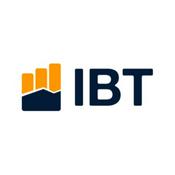291 episodios

New Rules: Earning Respect, Sustaining Engagement and Improving Presence
05/1/2026 | 34 min
Alison Fragale, author of the provactively titled “Likeable Bad Ass," breaks down the science of status—offering practical advice on how leaders can use warmth and competence to drive respect and gain greater influence.Key Takeaways:1. Status—being respected and regarded—leads to influence, access to resources, and career advancement.2. People judge quickly, and have high regard for those who are well-intentioned and competent.3. Hard work needs to be seen to ensure effort is valued.4. You can leverage “swing thoughts” to improve your career. [SI1] [SI1]Do not really understand this. Remind me what “swing thoughts” are

Adam Grant on questioning conventional wisdom and making better decisions [encore - 04.08.25]
30/12/2025 | 30 min
Wharton organizational psychologist and New York Times-bestselling author Adam Grant shares insights on making better business decisions, fostering innovation and how your personal "challenge network” can lead to superior products and delight your customers.1. Encourage[SI1] Humor and Humility: They help maintain a flexible and open-minded approach, making it easier to rethink and adapt.2. Have Pre-Mortems: Discuss as many potential failures as possible before launching. That way you can prevent or know how to handle problems when they occur.3. Eschew Best Practices for Better Practices: “Best Practices” implies there’s only one right way, while seeking “Better Practices” encourages people to innovate and try new things.4. Build a Challenge Network: Maintain a group of trusted critics who provide truly honest feedback to improve your decision-making.5. Reward Speaking Truth to Power: Encourage employees to ask questions, suggest improvements and challenge outdated ideas. [SI1]Please run these by Adam

The business value of a desirable workplace [encore - 11.02.25]
23/12/2025 | 39 min
Jamie Hodari, CBRE's CEO of Building Operations & Experience, spotlights where he sees the biggest opportunity across commercial real estate: workplace experience. He discusses how a company’s space can attract tenants and enhance the employee experience, enriching people’s lives and increasing business effectiveness. Everything is operational real estate: Real estate companies are evolving from asset focused businesses to operating platforms, requiring high-quality management relentlessly focused on workplace experience.AI and data utilization are no longer nice-to-haves: Using AI to manage and interpret data is crucial for optimizing building operations.Markets are adapting to accommodate hybrid work models with flexible office usage: Urban markets especially put significant emphasis on making downtown areas vibrant.Finance institutions are catching up: The finance industry must recognize and adapt to the operational nature of modern real estate.Flight-to-quality is expanding: The focus for landlords and occupiers will increasingly be on creating spaces that people find enriching and valuable, not just functional.

Coming Up: Optimism about a continued real estate rebound in 2026
15/12/2025 | 39 min
J.P. Morgan Asset Management’s Josh Myerberg breaks down the 2026 real estate outlook, why quality assets and operational excellence matter, and where savvy investors are finding opportunity now. Don’t miss these timely insights from one of the industry’s top portfolio strategists.J.P. Morgan Asset Management is optimistic about 2026, driven by expectations of lower interest rates and resilient real estate fundamentals.Quality matters more than ever—top-performing assets and strong operators are expected to outperform, while tertiary markets and lower-tier properties carry greater risks.Retail real estate has made a strong comeback, and high-quality office space is showing positive momentum, especially in major markets like San Francisco and New York.Operational excellence and risk management—including attention to emerging risks—are critical for long-term portfolio success.Diversification remains key: even the best assets need to fit together strategically to reduce volatility and capture growth opportunities.

Shake It Off: Office investing is coming back
08/12/2025 | 41 min
Shorenstein CEO Brandon Shorenstein and CBRE’s Patrick Gildea discuss why the office market is poised for a comeback. Hear what they have to say about risk-adjusted returns, property conversions, the importance of workplace amenities and more.Key takeaways on office investing: Office market is recovering: Investment activity in the office sector is rebounding with more bidders and increased debt availability. Investment strategies have shifted: Investors are focused on cash flow and downside protection, with cash-on-cash yields reaching 8%–15%. Micro-market dynamics are key amid a flight to quality: Prime assets in live-work-play submarkets are outperforming, while obsolete buildings face demolition or conversion, reducing overall supply. Conversions are limited: Selective repositioning is critical, as only a small percentage of office buildings are structurally viable for residential or hotel conversions. Occupier priorities have changed: Tenants now prioritize wellness, sustainability and experiential amenities, driving demand for high-quality spaces.
Más podcasts de Economía y empresa
Podcasts a la moda de Economía y empresa
Acerca de The Weekly Take from CBRE
Escucha The Weekly Take from CBRE, Hágale como quiera y muchos más podcasts de todo el mundo con la aplicación de radio.net

Descarga la app gratuita: radio.net
- Añadir radios y podcasts a favoritos
- Transmisión por Wi-Fi y Bluetooth
- Carplay & Android Auto compatible
- Muchas otras funciones de la app
Descarga la app gratuita: radio.net
- Añadir radios y podcasts a favoritos
- Transmisión por Wi-Fi y Bluetooth
- Carplay & Android Auto compatible
- Muchas otras funciones de la app


The Weekly Take from CBRE
Descarga la app,
Escucha.






































